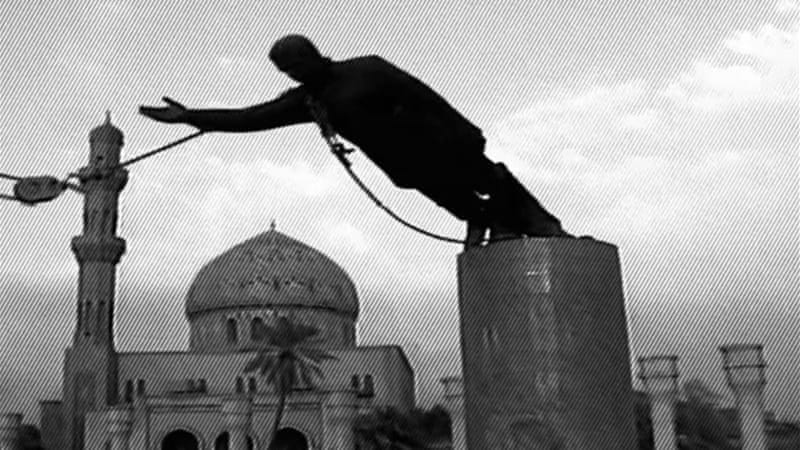Dictator Swagger:
On This Day
Baghdad, Iraq, April 9, 2003: With the help of U.S. troops, Iraqi civilians tear down a statue of Saddam Hussein in central Baghdad. In a display of insensitivity, a U.S. marine draped a U.S. flag over the head of the statue, which reportedly stunned the crowd and drew ire from Arab news commentators who watched from the nearby Palestine Hotel.
Though there would still be fighting ahead between coalition forces and Iraqi paramilitary fighters, the capture of Baghdad signalled the fall of Saddam Hussein’s government as Baghdad’s International Airport, Sujud Palace, Republican Palace and the Rasheed airbase all fell into the hands of coalition forces. In another signal of collapse of Ba’athist Iraq, that same morning Iraqi Information Minister Mohammed Saeed al-Sahaf, who had been the face of Hussein’s government in the lead up to and during the invasion, failed to turn up for work at his ministry’s office.
The Ba’ath party came to power in 1958 following the July 14 revolution, which overthrew the Hashemite monarchy. After two decades of internal coups and changes in leadership, Saddam Hussein became President of Iraq in 1979. Saddam’s brand of Ba’athism saw Iraqi politics shift to a militarist ideology with a vision of an Iraq-led Arab world. Like other autocratic governments, Saddam’s Iraq repressed any forms of dissent or protest, though their methods have been described as particularly brutal.
Saddam’s rule saw the Iran-Iraq War, in which Iraq was outwardly supported by the U.S., followed by the invasion of Kuwait and the ensuing first Gulf War, and a prolonged conflict with Kurdish forces (on which Saddam notoriously used chemical weapons) in northern Iraq. In 2003, backed by dubious claims of Iraq’s Weapons Of Mass Destruction, U.S.-led forces toppled Saddam’s government. After being discovered and captured in December 2003, he was found guilty of crimes against humanity and hanged on December 30, 2006.


